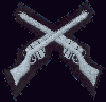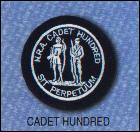Cadets have the opportunity to shoot in the Air Training Corps, with marksmanship on the training syllabus. Cadets at 39F sqn use 0.22 bore, single shot, bolt action No.8 rifles in a local indoor rifle range. Cadets over 14yrs old may fire the L98 Cadet GP rifle which is a non-automatic version of the standard British rifle on current issue - the Enfield L85A1.
Safety briefings and training are given to cadets before they can fire a weapon. Cadets are supervised at all times by Range Officers who are trained and authorised by the MOD to conduct range practices.

Lee Enfield No. 8 Rifle
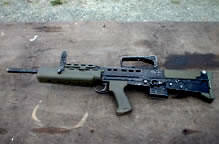
L98 A1 Cadet GP Rifle
.22 Rifle Shooting - Lee Enfield No 8
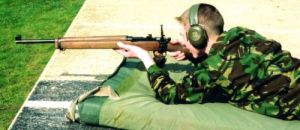
Several hours of training are undertaken before the cadets
are allowed on the range. This includes classroom training and hands-on
experience with the rifle. Cadets are tested on the theory and practice of
rifle shooting prior to their first experience of target rifle shooting.
The rifle used for basic training is the Lee Enfield No 8, .22 inch calibre,
bolt action rifle pictured here. This rifle is very simple to operate and
makes very little noise and has very little "kick" (although ear defenders
are always worn).
These pictures show cadets firing the No 8 rifle at an RAF range. They show the very stable, prone firing position used by cadets at all times when shooting. Cadets fire at paper "bullseye" targets, normally at a distance of 25 metres. Indoor and outdoor ranges are used.
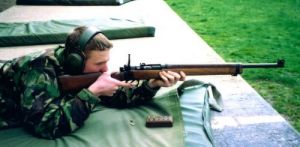
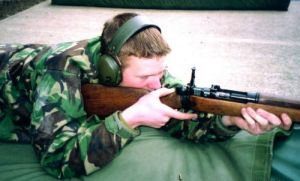
5.56 Shooting - L98 A1 Cadet GP Rifle
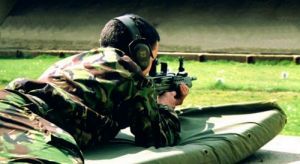
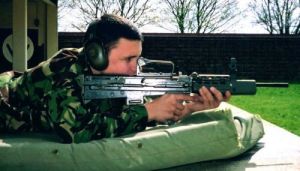
When cadets over the age of 14 prove that they are proficient with the .22 rifle, they may be given the opportunity to fire the 5.56 L98A1 General Purpose Cadet Rifle. The GP rifle is a modification to the standard British Army rifle on current issue - the L85A1. It fires the same ammunition - 5.56mm centre-fire ball - but is manually cocked and can fire only one round at a time. Cadets must be fully trained on this weapon before they can fire it. This includes detailed "dry" training and weapons handling training (WHT).
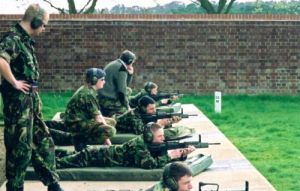
On the range, safety is
paramount. In the picture left, a typical range practice, the Range
Conducting Officer (RCO) is assisted by three other safety supervisors:
The Officer (standing) is keeping a close eye on one cadet; a CI is coaching
the far cadet who may be firing this rifle for the first time; in the centre
of the shot, a senior cadet is "sighting" - watching the fall of shot - to
check that all rounds fall within the safe area. All four firers can still
be seen clearly by the RCO (from who's viewpoint this photograph was taken).
With this level of supervision, safety for all personnel can be ensured.

